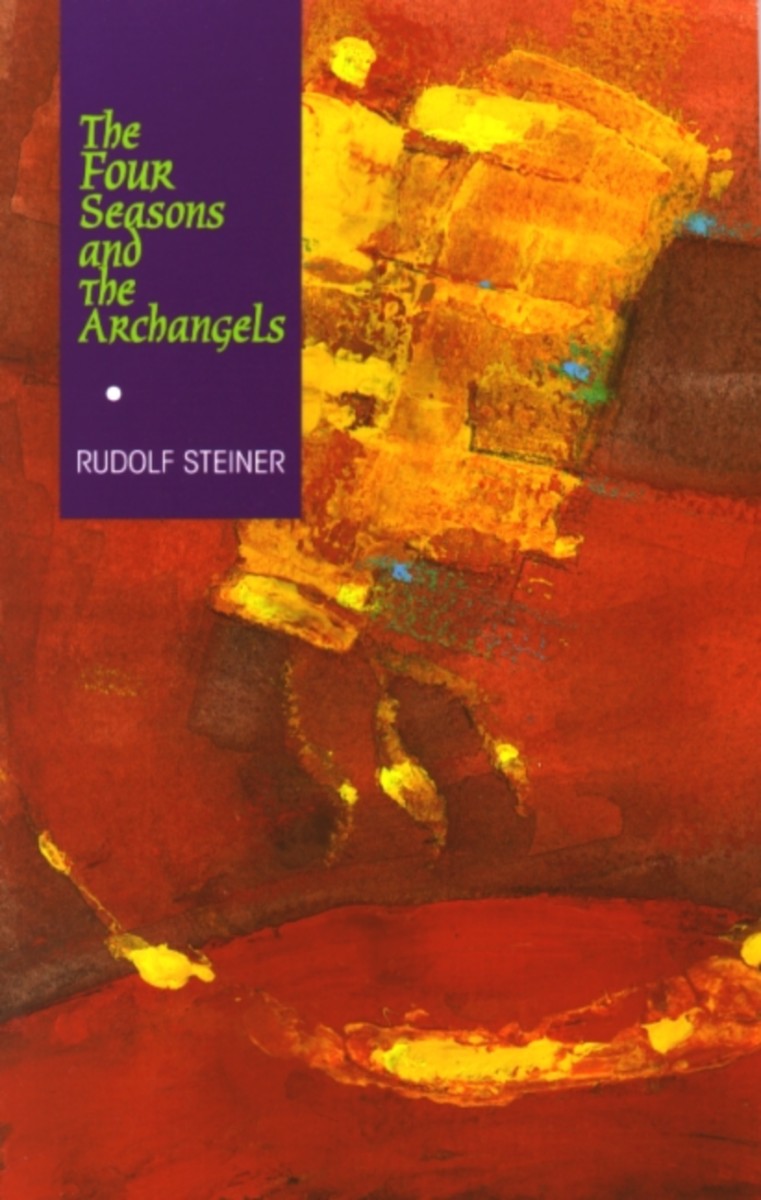The Four Seasons and the Archangels
Experience of the Course of the Year in Four Cosmic Imaginations (CW 229)
- Publisher
Rudolf Steiner Press - Published
1st August 1996 - ISBN 9781855840508
- Language English
- Pages 88 pp.
5 lectures, Dornach, Switzerland, October 5–13, 1923 (CW 229)
These five profound lectures look at the cosmic forces behind the four great festivals of the year, providing a wealth of material for fruitful thought and meditation. Steiner presents great imaginative pictures that unite the heavens and the Earth through a portrayal of the activities of the archangels Michael, Gabriel, Raphael, and Uriel.
In the course of the lectures, Rudolf Steiner offers spiritual insight into subjects that include the alchemical processes of sulfur, mercury, and salt in the cosmos; the realms of humankind and plants; spiritual “combustion” processes; crystals; clouds and meteors; the movements of elemental beings in nature; and the conflicting efforts of Lucifer and Ahriman—the two great adversaries—to divert Earth from its true purpose.
The Four Seasons and the Archangels includes five color plates of Rudolf Steiner’s blackboard drawings made during the lectures.
This volume is a translation from German of Das Miterleben des Jahreslaufes in vier kosmischen Imaginationen (GA 229).
C O N T E N T S:
Foreword
1. The Michael Imagination
2. The Christmas Imagination
3. The Easter Imagination
4. The St. John Imagination
5. The Working Together of the Four Archangels
Rudolf Steiner
Rudolf Steiner (b. Rudolf Joseph Lorenz Steiner, 1861–1925) was born in the small village of Kraljevec, Austro-Hungarian Empire (now in Croatia), where he grew up. As a young man, he lived in Weimar and Berlin, where he became a well-published scientific, literary, and philosophical scholar, known especially for his work with Goethe’s scientific writings. At the beginning of the twentieth century, he began to develop his early philosophical principles into an approach to systematic research into psychological and spiritual phenomena. Formally beginning his spiritual teaching career under the auspices of the Theosophical Society, Steiner came to use the term Anthroposophy (and spiritual science) for his philosophy, spiritual research, and findings. The influence of Steiner’s multifaceted genius has led to innovative and holistic approaches in medicine, various therapies, philosophy, religious renewal, Waldorf education, education for special needs, threefold economics, biodynamic agriculture, Goethean science, architecture, and the arts of drama, speech, and eurythmy. In 1924, Rudolf Steiner founded the General Anthroposophical Society, which today has branches throughout the world. He died in Dornach, Switzerland.


